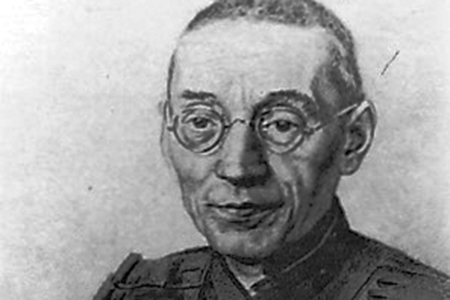 When Titus Brandsma was arrested by the Gestapo on January 19, 1942, he was locked into a solitary cell.
When Titus Brandsma was arrested by the Gestapo on January 19, 1942, he was locked into a solitary cell.
Like many other Dutch patriots, he was taken to a prison nicknamed the “Orange Hotel” in Scheveningen so called because of the royal House of Orange, and the Queen’s government in exile. Many fellow prisoners may have sunk into despair that their normal lives were at an end. But for Titus, it was just a beginning.
Friar Brandsma had lived his life in total faithfulness to the Carmelite Rule. One essential element of that Rule stated that the individual should “stay in his own cell, or near it, pondering the Lord’s law day and night and keeping watch at his prayers unless attending to some other duty.”
Titus had always been a joyful model of regularity to prayer with his community. No matter how busy his life was, he tried to be present at all prayer and community activities. But his “other duties” were electrifying! In addition to his University activities, he worked for the reunification of the Eastern Churches, and organized a Marian congress, and one on Dutch medieval mysticism. He contributed to activities honoring St Boniface and Frisian saints. He went on a lecture tour of Ireland, Canada, and the United States in 1935. His lectures were published as “Carmelite Mysticism: Historical Sketches.” At the request of the Dutch bishops, he was also spiritual liaison for the Catholic schools and their delegate for the Catholic journalists.
The seven weeks Titus spent at Scheveningen were relatively easy, as prisons go. It was a normal civilian facility which had been taken over by the SS, and was home to Titus during his interrogation by SS Sergeant-Major Paul Hardegen. It was a stark existence, but not actively cruel, as the concentration camps would be later in that year. He was allowed to have books, writing materials and tobacco. The meals were simple, but fairly healthy. He was allowed to wear his own clothes. In fact, it seemed to be such an “ordinary” prison that he never let go of the idea that he might be released any time.
And so it was that Titus immediately went to work turning his prison cell into a monastic cell. All of his busy, frantic activity in the service of church and state had come to a sudden end. There was nothing that he had to hurry off to do. There was nowhere to go. So with his traditional optimism Titus decided to embrace the more spiritual side of Carmelite life, if only to catch up with the prayerful reflection that he had been “too busy” for.
He set up a simple prayer altar using holy cards from his breviary. He displayed cards of the Sacred Heart, St Teresa, and St John of the Cross. His breviary was open to a beautiful picture of Our Lady of Mount Carmel.
He remained conscious of what his brother Carmelites were doing at any hour, and tried to match his activity with theirs. He coordinated both liturgical and devotional prayers with his community. Times for eating and sleeping were beyond his control, but he managed to schedule regular times for prayer, meditating, exercise, study and writing, relaxing, and tidying up his cell. He even worked on a biography of Teresa of Avila.
With all this in mind, Titus was able to write: “Blessed solitude! I am already quite at home in this small cell.
I have not yet got bored here, quite the contrary. I am alone, certainly, but never was Our Lord so close to me.
I could shout for joy because he made me find him again entirely, without me going to see people, nor people me. Now he is my only refuge, and I feel secure and happy. I would stay here for ever, if he so disposed.
Seldom have I been so happy or content.”
In his next prisons, circumstances would not be so pleasant, but his days at Scheveningen may have been God’s blessing as a spiritual preparation for what came next.
Download the Leaflet 11. A tale of two cells here
